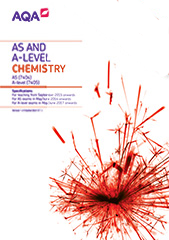3.2.3 Group 7(17), the halogens
The halogens in Group 7 are very reactive non-metals. Trends in their physical properties are examined and explained. Fluorine is too dangerous to be used in a school laboratory but the reactions of chlorine are studied. Challenges in studying the properties of elements in this group include explaining the trends in ability of the halogens to behave as oxidising agents and the halide ions to behave as reducing agents.
Trends in properties
Content |
Opportunities for skills development |
|---|---|
|
The trends in electronegativity and boiling point of the halogens. Students should be able to:
The trend in oxidising ability of the halogens down the group, including displacement reactions of halide ions in aqueous solution. The trend in reducing ability of the halide ions, including the reactions of solid sodium halides with concentrated sulfuric acid. The use of acidified silver nitrate solution to identify and distinguish between halide ions. The trend in solubility of the silver halides in ammonia. Students should be able to explain why:
|
AT d and k PS 2.2 Students could carry out test-tube reactions of solutions of the halogens (Cl2, Br2, I2) with solutions containing their halide ions (eg KCl, KBr, KI). Students could record observations from reactions of NaCl, NaBr and NaI with concentrated sulfuric acid. Students could carry out tests for halide ions using acidified silver nitrate, including the use of ammonia to distinguish the silver halides formed. |
Uses of chlorine and chlorate(I)
Content |
Opportunities for skills development |
|---|---|
The reaction of chlorine with water to form chloride ions and chlorate(I) ions. The reaction of chlorine with water to form chloride ions and oxygen. Appreciate that society assesses the advantages and disadvantages when deciding if chemicals should be added to water supplies. The use of chlorine in water treatment. Appreciate that the benefits to health of water treatment by chlorine outweigh its toxic effects. The reaction of chlorine with cold, dilute, aqueous NaOH and uses of the solution formed. |
Research opportunity Students could investigate the treatment of drinking water with chlorine. Students could investigate the addition of sodium fluoride to water supplies. |
Required practical
4Carry out simple test-tube
reactions to identify:
|
